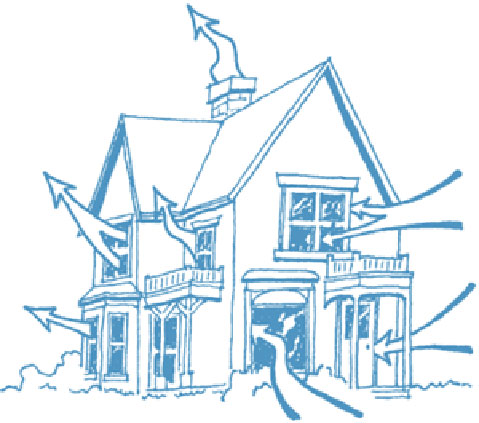Green Your Crib: Energy Upgrades for Existing Homes

Information on how to build an energy-efficient home is easy to come by these days — but what if you can’t start from the ground up? What about the 18 million homes that already exist in California? Are those of us living in existing homes relegated to changing lightbulbs and adjusting thermostats?
Not at all. Enter the “home performance” contractor. Home performance is the discipline of applying building science and retrofit techniques to existing buildings, and the results can be dramatic; numerous case studies cite total measured energy used by the home reduced by as much as 70 percent!
Building science developed in the 1980s along with sophisticated equipment, making possible the measurement and study of buildings. By applying these tools and scientific principles, we now know how to transform the energy performance of buildings.
The good news doesn’t stop there. It turns out that many of the same retrofit measures that reduce energy use also improve the quality of indoor air, humidity, and moisture levels, not to mention the overall longevity of the structure itself. The benefits are many and varied, from reduced indoor allergies to less frequent dusting to decreased home repair work.
But what goes into an energy upgrade? Since every home is unique, a good home performance contractor starts by running tests to understand exactly what is needed for the specific building. With this data, the contractor then recommends the upgrade measures for maximum improvement.
Because most homes are “leaky” — that is, air can pass more or less freely between indoors and outdoors — the first priority is to stop the leaks. Typically, we spend energy (and money) to heat or cool our indoors, but, because of leaks, we end up heating or cooling the outdoors. Home heating and cooling is by far the biggest use of energy in homes, so stopping this energy wastage represents a key first step used by the home performance contractor.
Most of us think of windows when we think of building air leaks, but the science shows us that windows are usually not the main culprit. Because warm air rises (the stack effect), most air escapes at the top and bottom of buildings through the attic and the crawl space. Consequently, air sealing is one of the most important strategies. With this single measure, both energy use and indoor air quality can be improved.
One caveat: This work should be done by a professional trained in building science and home performance. Tightening a home can have unsafe side effects. For example, if gas appliances are present, there is a danger of trapping noxious, life-threating fumes inside the home. A professional will understand these risks and will use test equipment to verify that they’ve been avoided.



